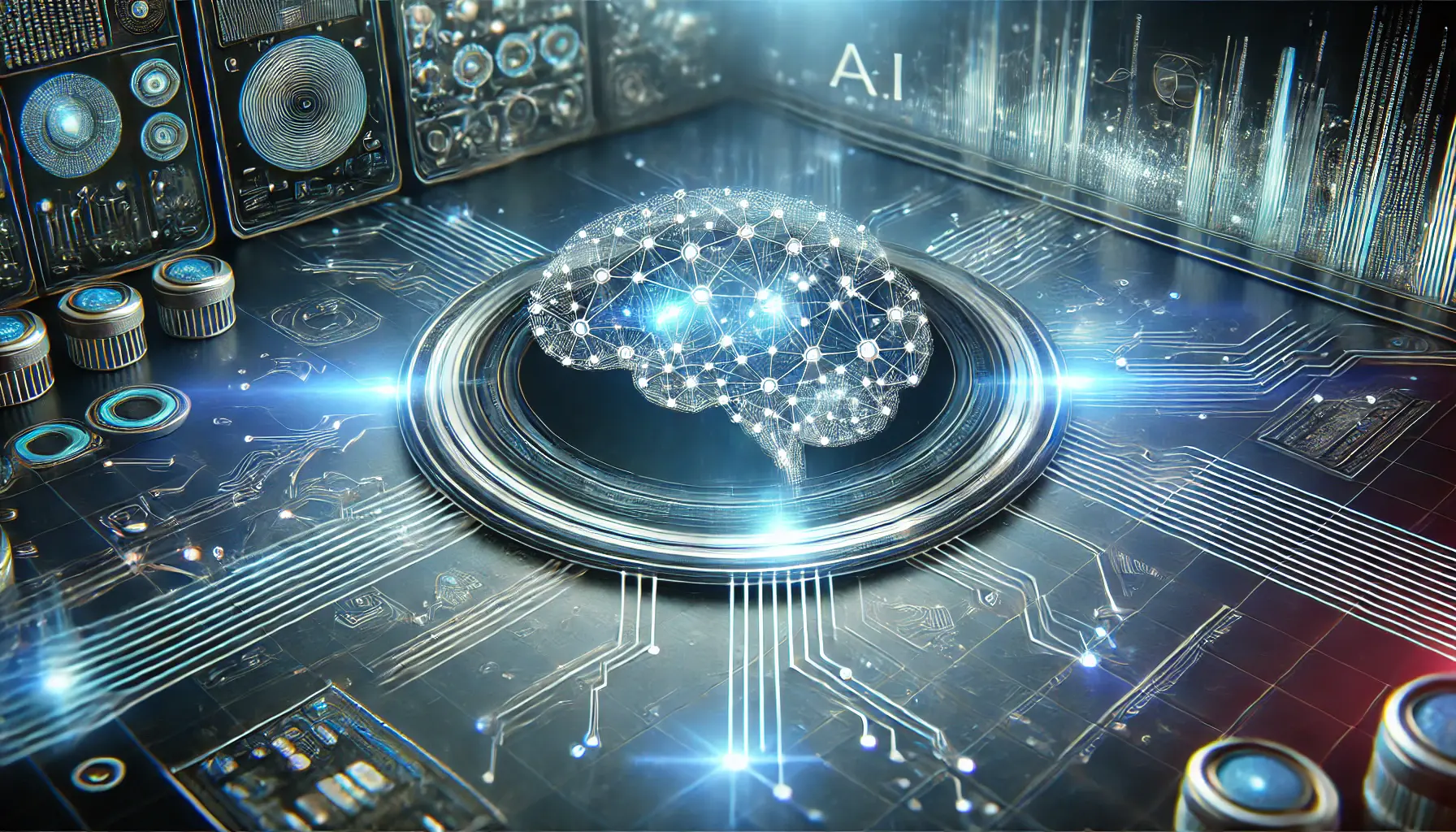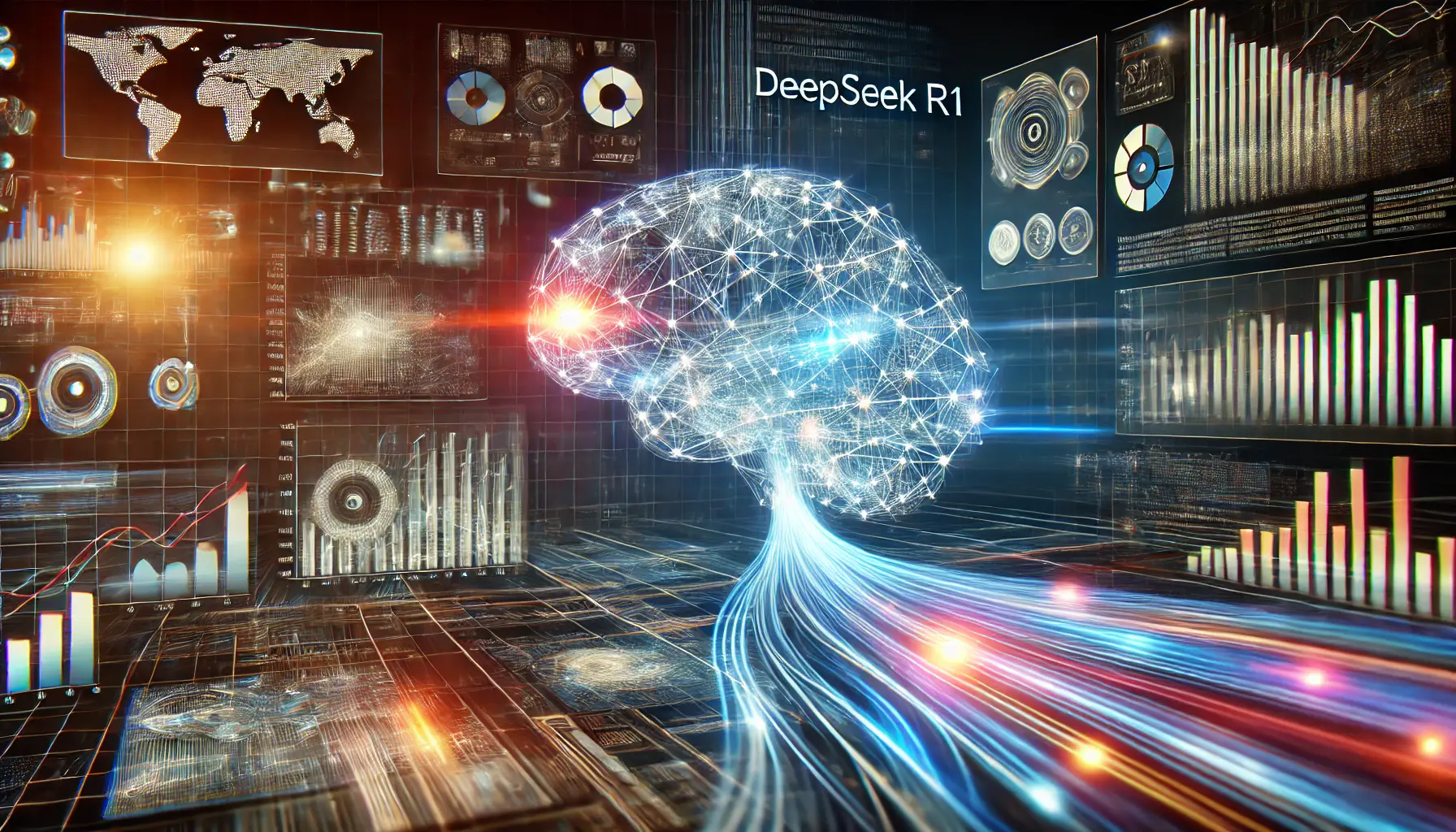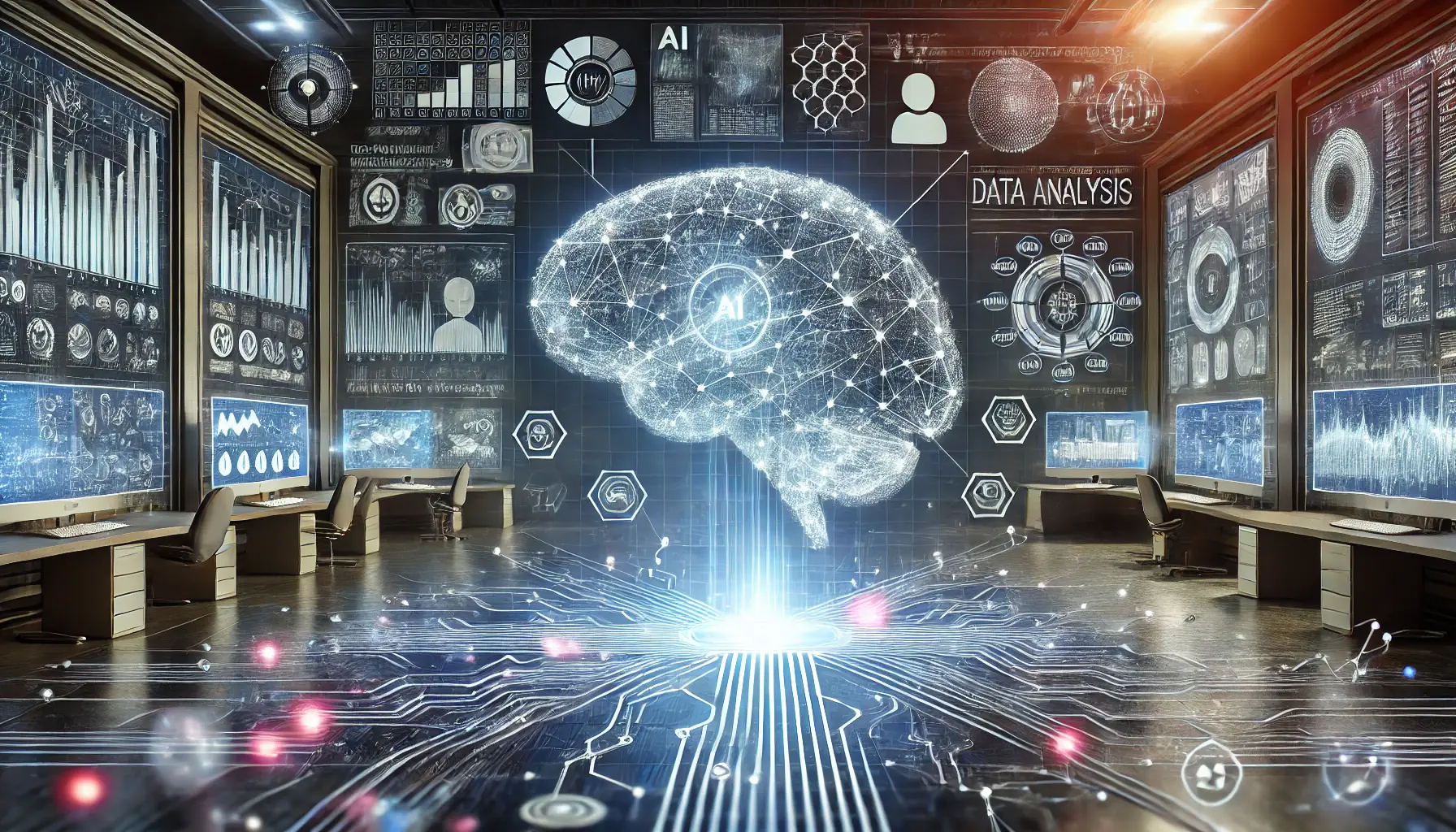In today’s rapidly evolving digital age, data analysis is the foundation of informed decision-making across a wide variety of industries.
But the size and complexity of the data can be downright overwhelming.
That is where ChatGPT o1 enters the picture—OpenAI’s latest AI model that is set to revolutionize the way we analyze data.
By enhancing reasoning and simplifying complex tasks, ChatGPT o1 is poised to transform data analysis, making it more accessible and streamlined for professionals and enthusiasts alike.
- Introduction to ChatGPT o1 in Data Analysis
- Enhancing Data Analysis with ChatGPT o1
- Practical Applications of ChatGPT o1
- Limitations and Considerations for ChatGPT o1 in Data Analysis
- Future of ChatGPT o1 in Data Analysis
- The Revolutionary Function of ChatGPT o1 in Data Analysis
- Frequently Asked Questions on ChatGPT o1 in Data Analysis
Introduction to ChatGPT o1 in Data Analysis
ChatGPT o1 represents a major leap in artificial intelligence, specifically designed to enhance advanced reasoning processes.
Unlike earlier versions, this model ‘thinks’ before responding, creating intricate lines of reasoning that improve its problem-solving capabilities.
This self-aware process allows ChatGPT o1 to excel in areas requiring deep analytical thought, such as data analysis.
The evolution from previous models to ChatGPT o1 highlights OpenAI’s commitment to advancing AI’s cognitive abilities.
With the introduction of a new optimization algorithm and domain-specific training data, ChatGPT o1 has been fine-tuned to understand and process complex data structures, making it an invaluable tool for data analysts.
The potential of ChatGPT o1 in modern data analysis cannot be overstated.
Its ability to automate data preprocessing, generate insightful visualizations, and improve predictive model accuracy is a game-changer.
By utilizing ChatGPT o1, analysts can spend more time interpreting results and making strategic decisions, rather than being burdened with tedious data manipulation.

An advanced AI system analyzing and automating data insights in a high-tech workspace, representing the capabilities of ChatGPT o1.
Overview of ChatGPT o1’s Capabilities
ChatGPT o1 has cutting-edge features that enable it to excel at data analysis tasks:
- Automated Data Preprocessing: Efficiently cleans and organizes raw data.
- Advanced Data Visualization: Produces interactive tables and charts for enhanced data understanding.
- Improved Predictive Modeling: Employs advanced algorithms to enhance forecasting accuracy.
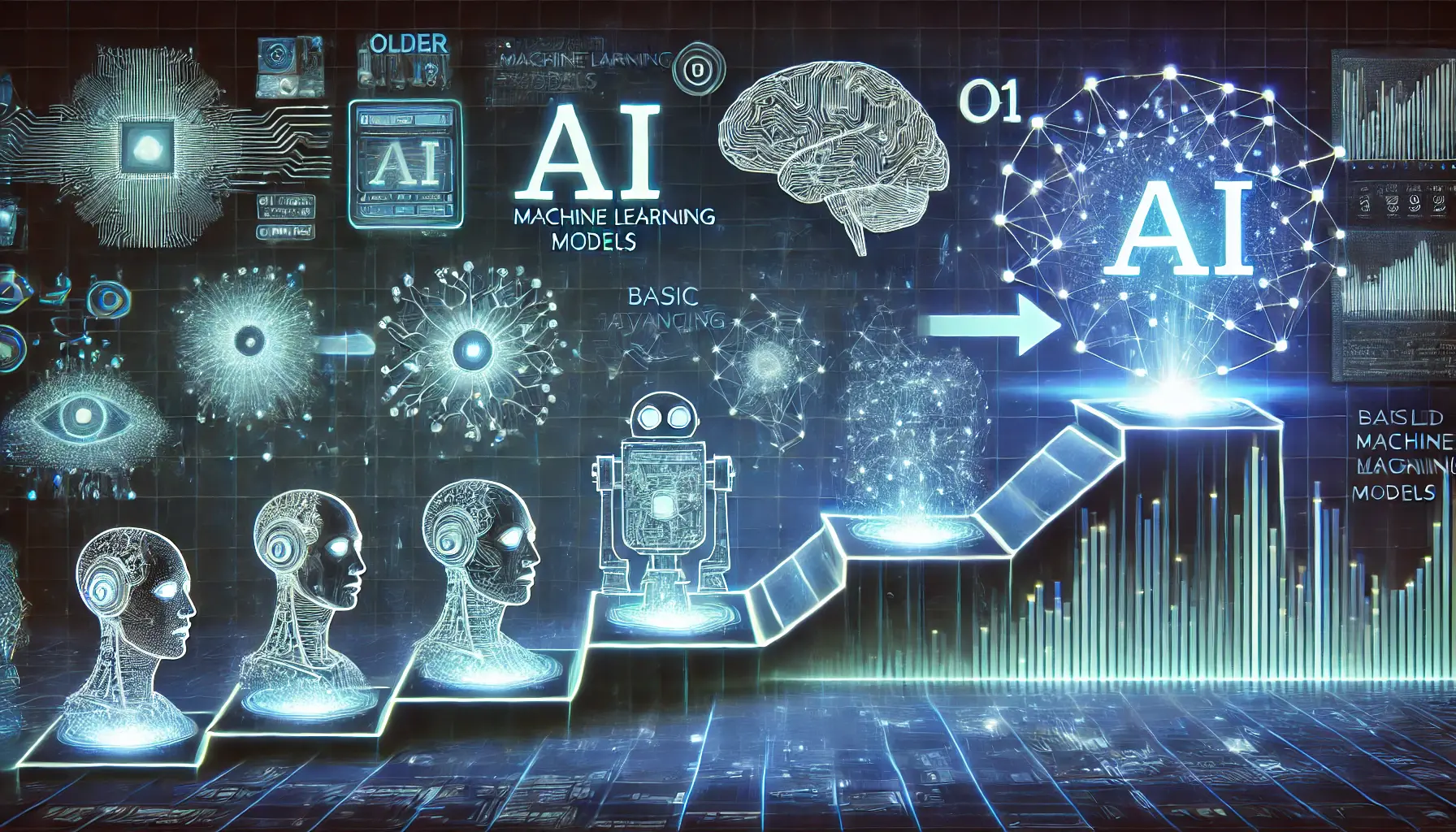
The transformation of AI over time, illustrating the advancements from basic neural networks to the sophisticated reasoning capabilities of ChatGPT o1.
Evolution from Earlier Models to ChatGPT o1
The transition to ChatGPT o1 was marked by major improvements:
- Enhanced Reasoning Skills: Shifted from producing rapid responses to careful, step-by-step solutions.
- Specialized Training: Included datasets centered on intricate problem-solving situations.
- Incorporation of Reinforcement Learning: Allowed the model to learn from feedback, sharpening its analytical methods.
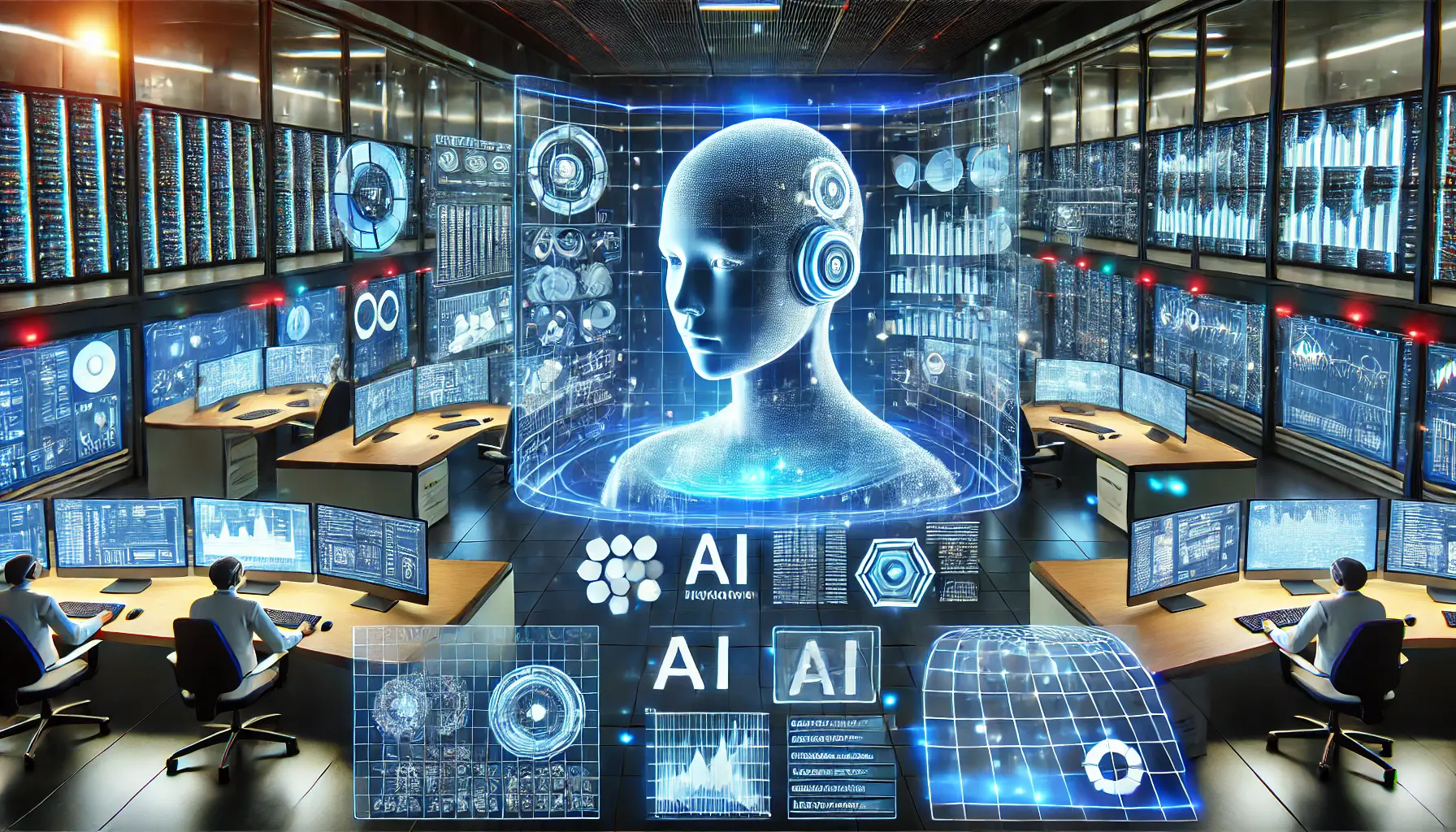
An advanced AI-driven control center optimizing data analysis, highlighting the critical role of ChatGPT o1 in modern decision-making.
Importance of ChatGPT o1 in Contemporary Data Analysis
ChatGPT o1’s role in data analysis is multifaceted:
- Efficiency: Saves time on data cleaning and preparation.
- Accuracy: Minimizes incorrect interpretations of data and predictive models.
- Accessibility: Offers advanced data analysis techniques to a broader group of users, even those who lack high-level technical expertise.
By integrating ChatGPT o1 into your data analysis workflow, you can become more efficient, more perceptive, and better equipped to make sound decisions based on accurate and trustworthy data interpretations.
ChatGPT o1 enhances data analysis with advanced reasoning and automation, reducing complexity and improving efficiency.
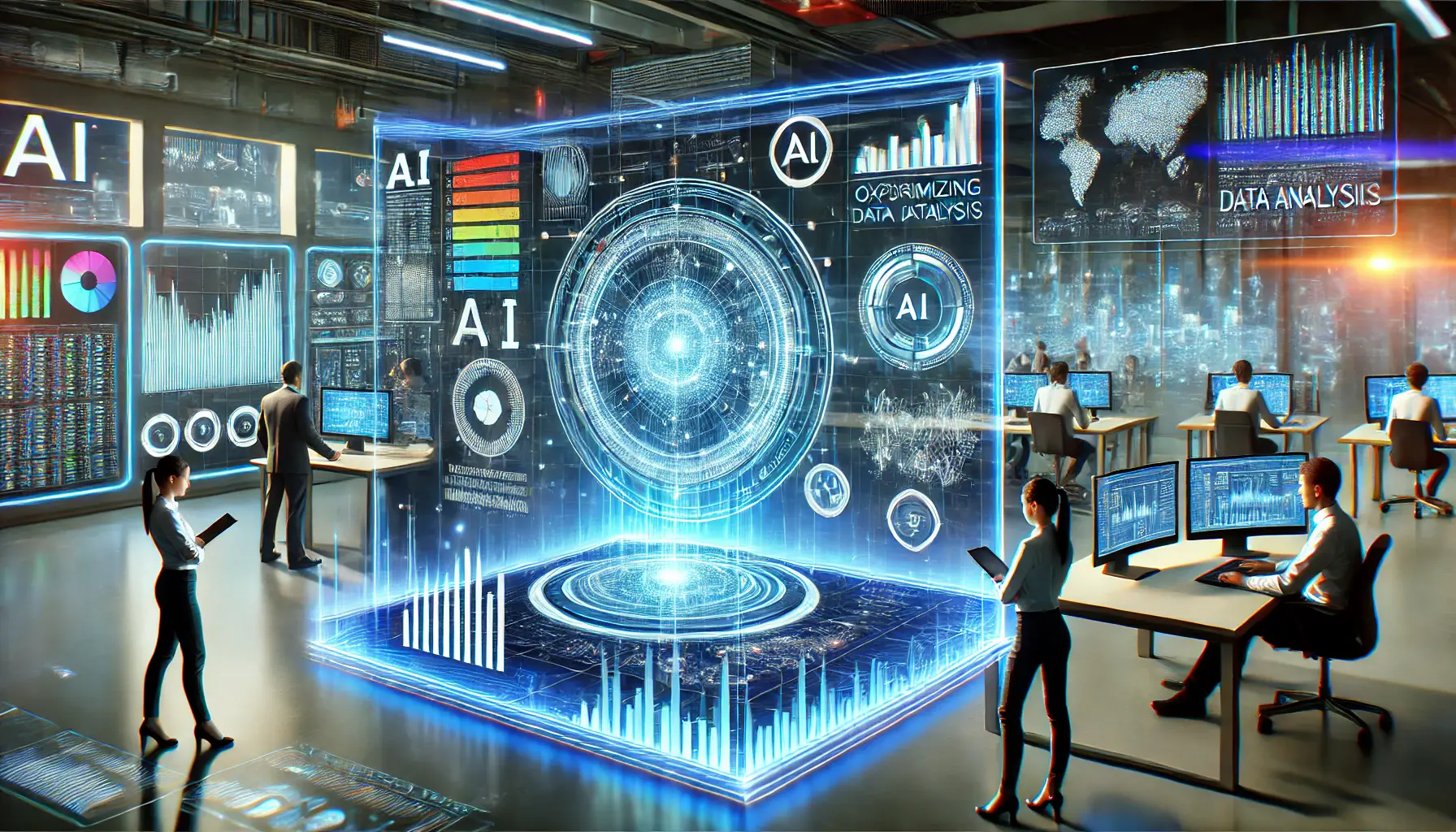
An advanced AI system optimizing data analysis with real-time visual insights, demonstrating the capabilities of ChatGPT o1.
Enhancing Data Analysis with ChatGPT o1
Efficiency and accuracy are the defining features of data analysis.
ChatGPT o1 is an innovative tool that simplifies complex tasks and enables analysts to focus on deriving meaningful insights.
By integrating advanced reasoning abilities, ChatGPT o1 streamlines data preprocessing, visualization, and predictive modeling, thereby enhancing the analytical process.
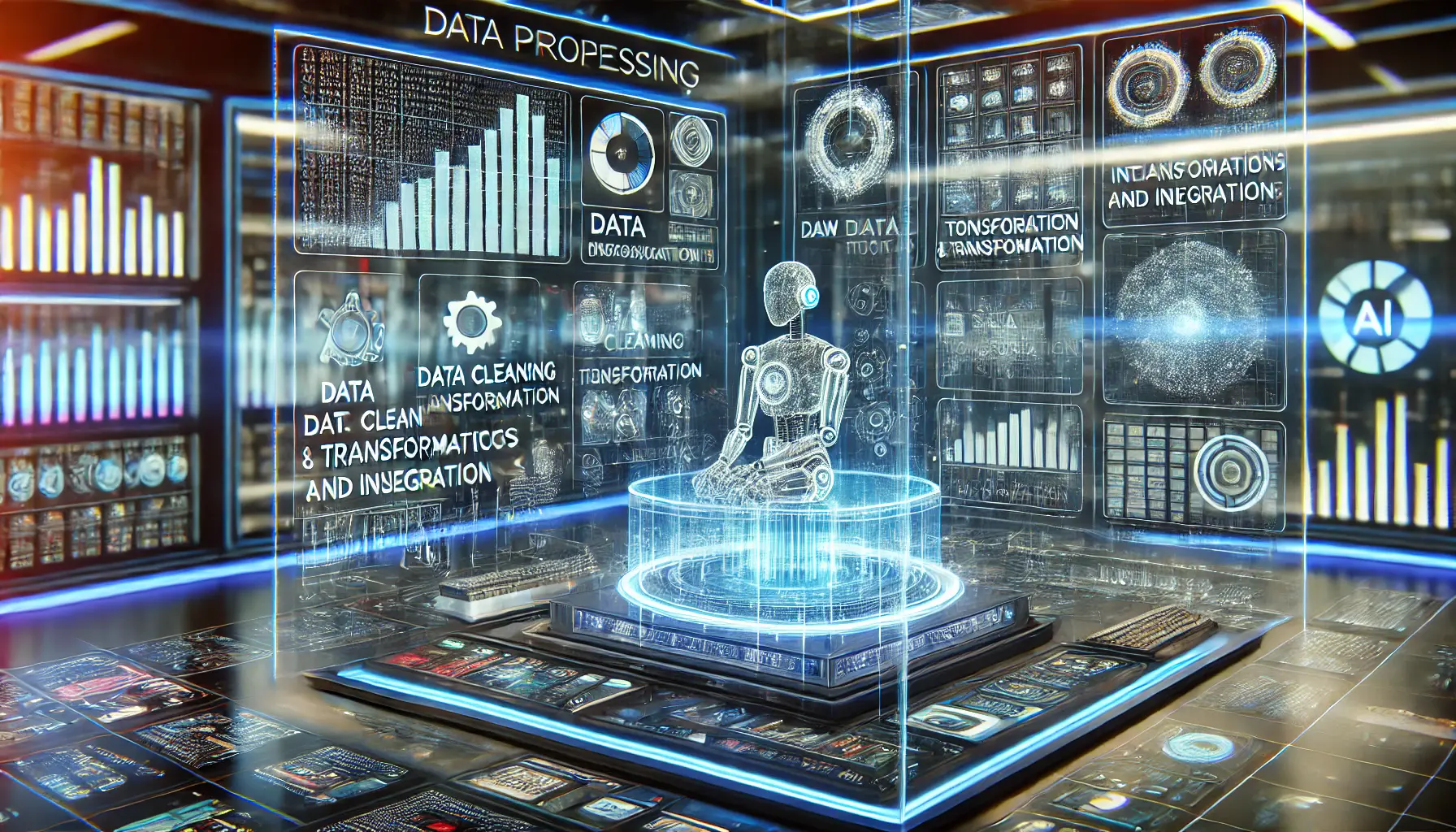
An AI-powered workspace efficiently automating data preprocessing, including cleaning, transformation, and integration.
Automating Data Preprocessing Tasks
Data preprocessing is one of the most critical steps in any analytics activity, often requiring significant time and resources.
ChatGPT o1 reduces this burden by automating several preprocessing operations:
- Data Cleaning: Identifies and fixes inconsistencies, missing values, and errors in datasets to ensure data integrity.
- Data Transformation: Converts raw data into suitable forms for analysis, including normalization and encoding of categorical variables.
- Data Integration: Merges data from multiple sources, providing a unified dataset for comprehensive analysis.
Utilizing ChatGPT o1 for these tasks allows analysts to accelerate the data preparation phase, enabling more time for in-depth analysis and interpretation.
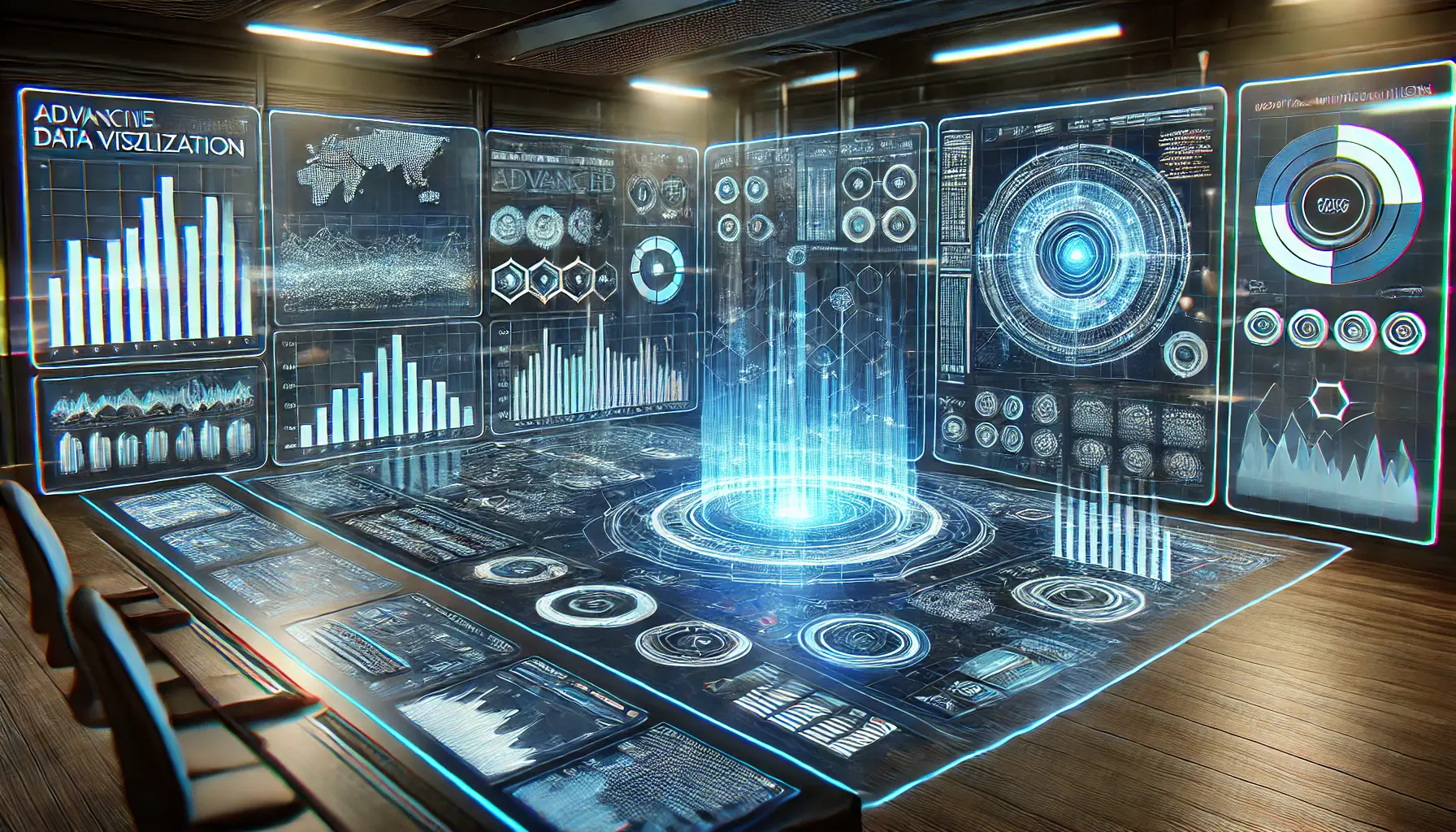
A cutting-edge AI-powered control center showcasing dynamic and interactive data visualizations for advanced analysis.
Advanced Data Visualization Techniques
Data visualization is essential for uncovering patterns and effectively communicating insights.
ChatGPT o1 enhances this aspect by enabling the creation of sophisticated visualizations:
- Automated Chart Generation: Produces various types of charts and graphs, such as bar charts, line graphs, and scatter plots, tailored to the data type.
- Interactive Dashboards: Develops dynamic dashboards that allow users to drill down into information through interactive elements, enhancing user engagement and comprehension.
- Customization: Offers options to customize visual elements, such as color schemes, labels, and annotations, to meet specific analytical needs.
These capabilities enable analysts to present data more intuitively and informatively, ultimately improving decision-making processes.
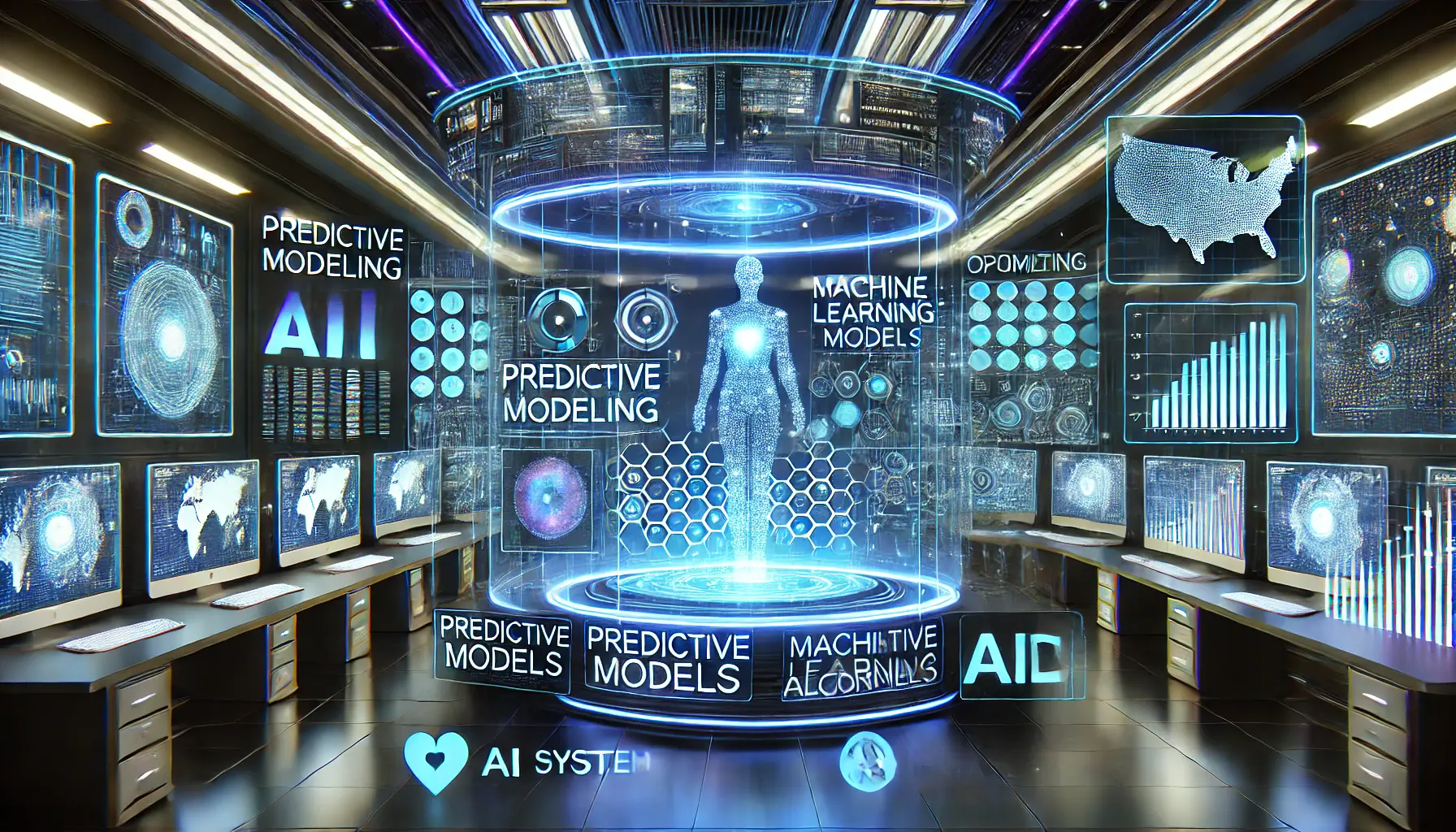
An advanced AI system optimizing predictive models and machine learning algorithms for more accurate forecasts.
Improving Accuracy in Predictive Modeling
Predictive modeling forms the foundation of data analysis, allowing analysts to generate forecasts and make data-driven decisions.
ChatGPT o1 enhances this area by:
- Feature Engineering: Automatically detects and generates relevant features from raw data, improving model accuracy.
- Model Selection and Hyperparameter Tuning: Recommends suitable machine learning models and optimizes hyperparameters for enhanced predictive accuracy.
- Validation and Testing: Conducts rigorous validation and testing procedures to ensure model reliability and stability.
By incorporating ChatGPT o1 into predictive modeling workflows, analysts can create more accurate and reliable forecasts, leading to more effective strategic decision-making.
In summary, ChatGPT o1 significantly enhances data analysis by automating tedious processes, facilitating sophisticated visualizations, and improving predictive model accuracy.
Its integration into analytical workflows not only boosts efficiency but also enables analysts to extract deeper insights from their data.
By automating data preprocessing, visualization, and predictive modeling, ChatGPT o1 enables faster and more accurate decision-making.
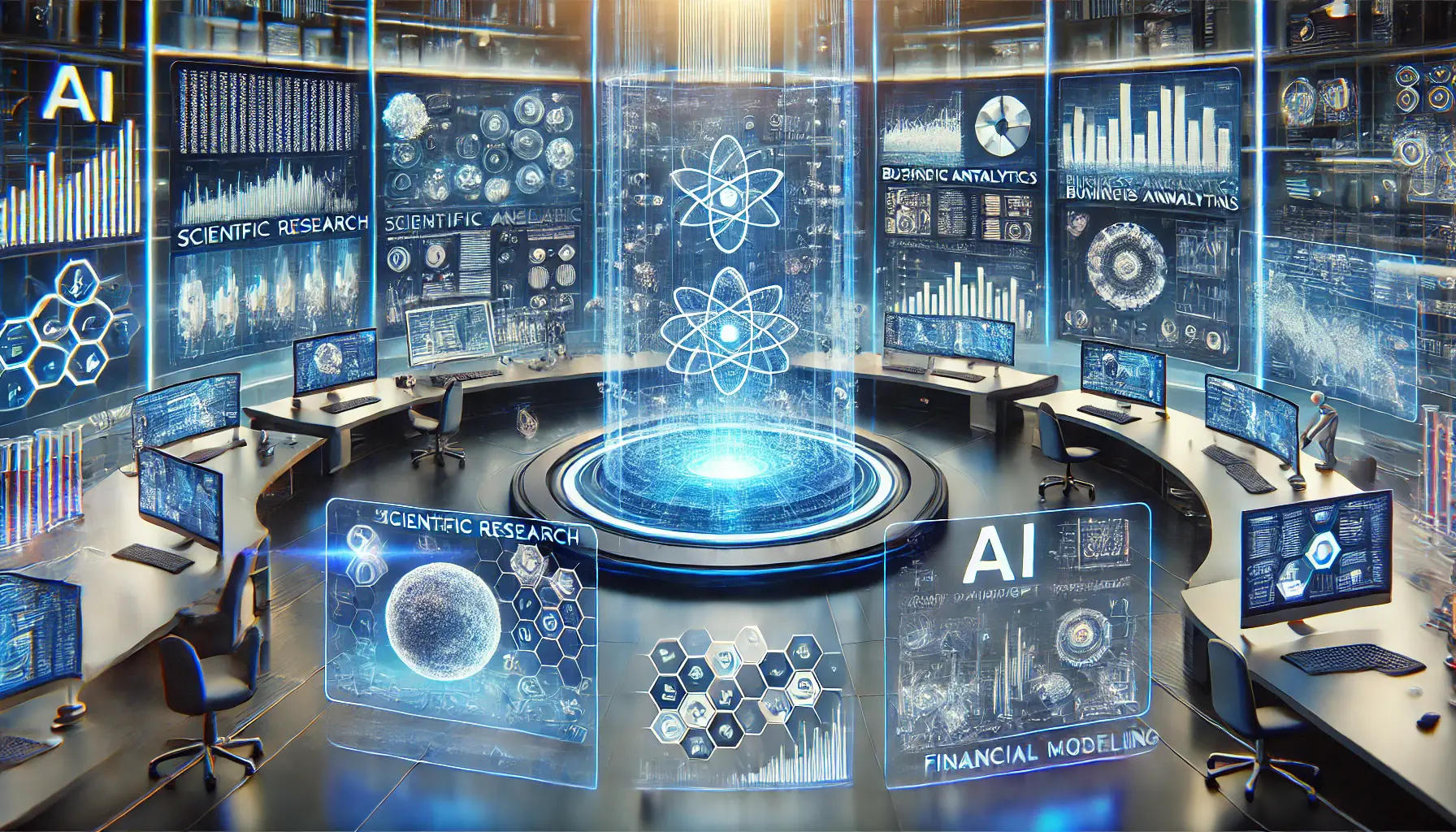
ChatGPT o1 powering real-time insights and analysis across diverse sectors, including research, business, and finance.
Practical Applications of ChatGPT o1
With the fast pace of developing technologies nowadays, ChatGPT o1 is a revolutionary tool in several fields.
Its sophisticated reasoning power allows it to handle complex tasks, opening up new possibilities for scientific research and business analytics.
Let’s explore how ChatGPT o1 is transforming these fields.

Researchers in a high-tech lab leveraging ChatGPT o1 to analyze complex scientific data and enhance research capabilities.
Using ChatGPT o1 in Scientific Research
Scientific research typically involves intricate problem-solving and data interpretation.
ChatGPT o1 facilitates this process through:
- Complex Data Interpretation: Aids scientists in analyzing sophisticated datasets, leading to more accurate conclusions.
- Hypothesis Generation: Proposes innovative ideas and potential hypotheses based on existing data, reducing the research cycle.
- Automating Literature Reviews: Consolidates vast amounts of scientific research, enabling researchers to stay updated with the latest developments quickly.
By leveraging ChatGPT o1 in their workflows, researchers can focus on experimental design and interpretation while delegating mundane analytical tasks to AI.
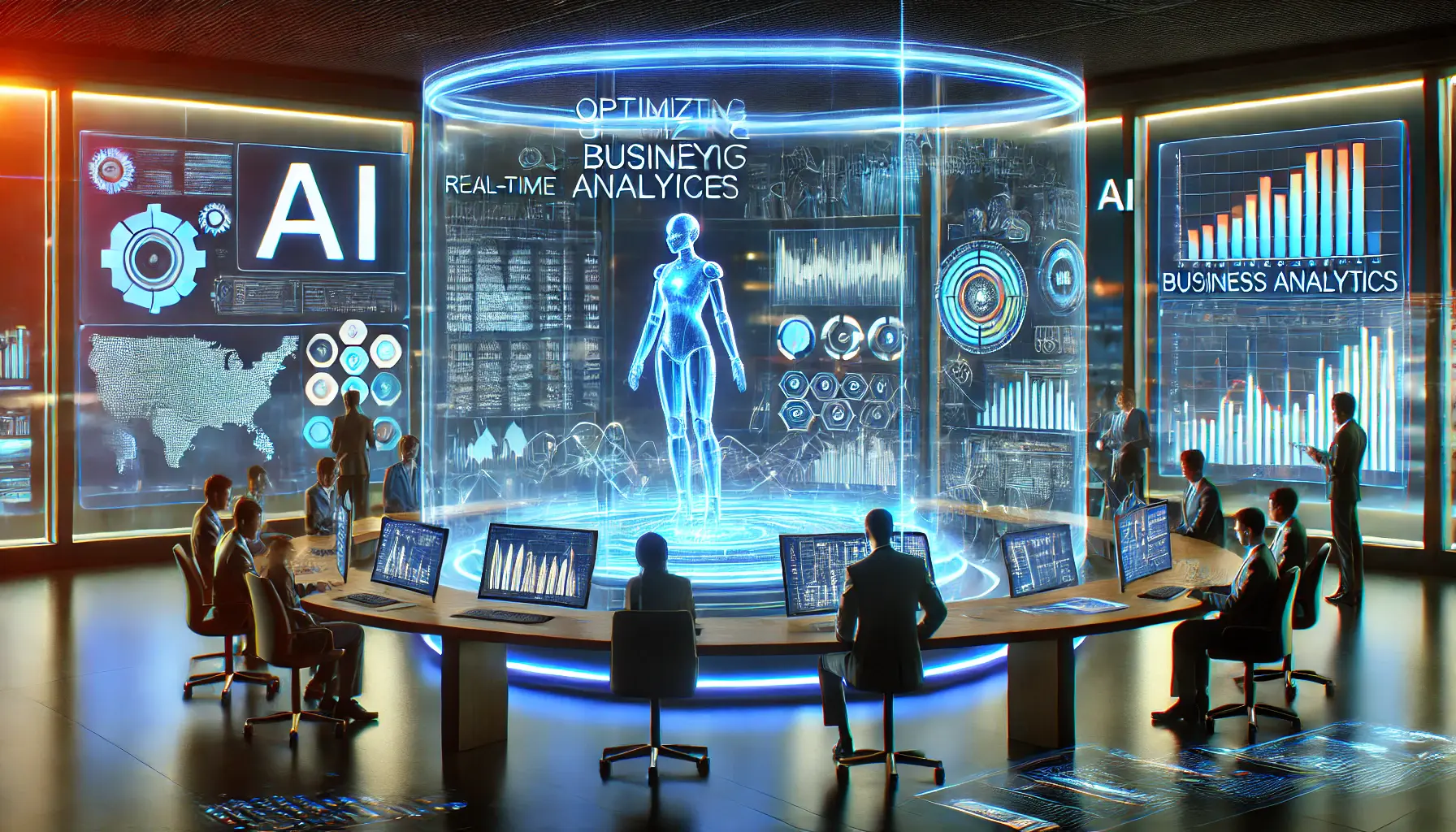
AI-powered business analytics environment optimizing data analysis for strategic decision-making.
Improving Business Analytics Processes
In business, data-driven decision-making is crucial.
ChatGPT o1 enhances this by:
- Predictive Analytics: Forecasts market trends based on historical data to assist businesses in strategic planning.
- Customer Insights: Analyzes customer sentiment and consumer behavior to identify trends and improve engagement strategies.
- Financial Modeling: Assists businesses in creating precise financial models outlining future performance under various scenarios.
Implementing ChatGPT o1 in business analytics allows companies to gain deeper insights, optimize operations, and maintain a competitive edge in the market.
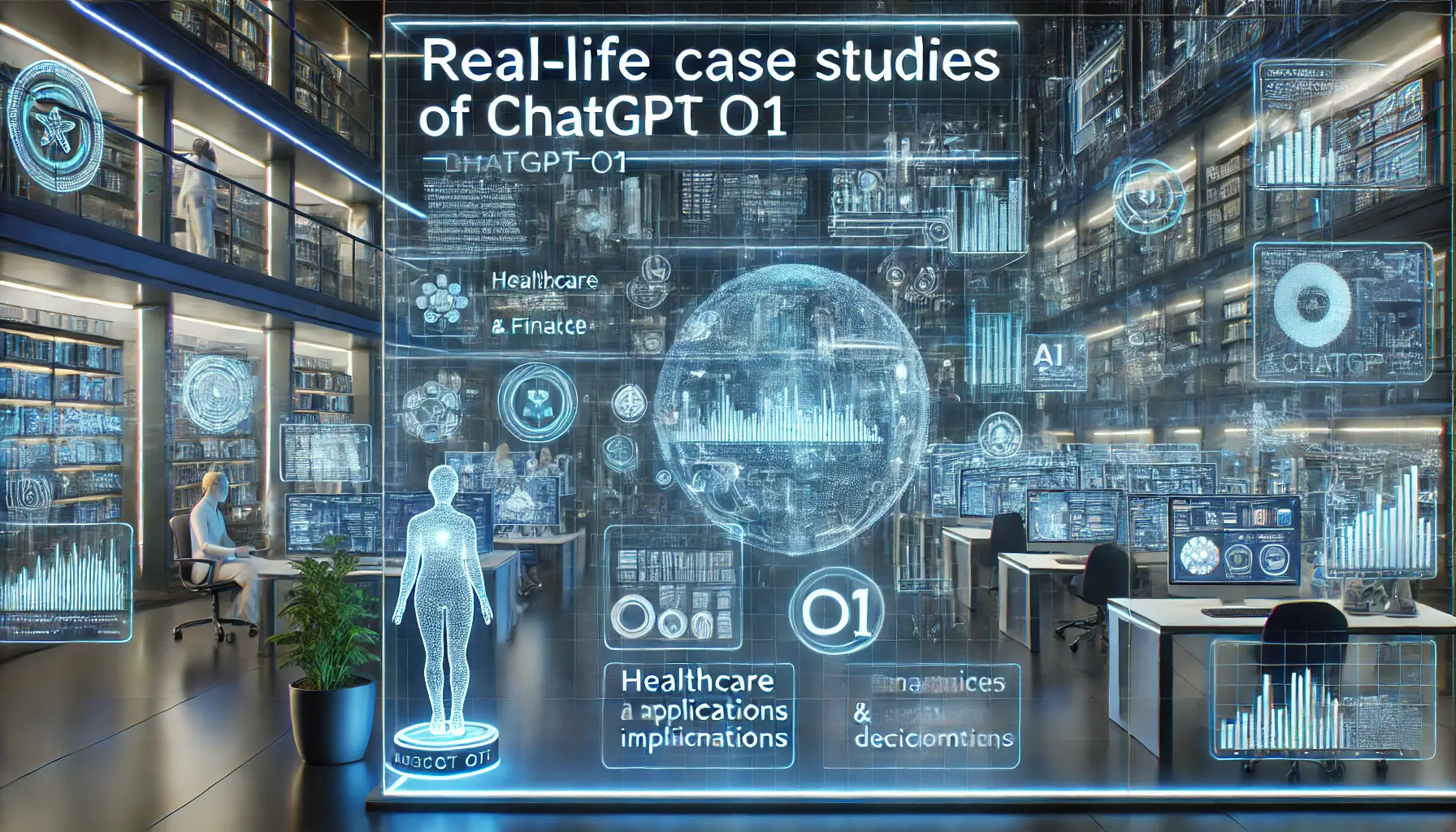
ChatGPT o1 enhancing decision-making and providing insights across different industries through real-time data processing.
Real-Life Scenarios of ChatGPT o1 Implementation: Case Studies
Several organizations have successfully integrated ChatGPT o1 into their operations:
- Healthcare Research: Hospitals and medical institutions have used ChatGPT o1 to analyze complex biological data, leading to new discoveries in disease understanding and treatment methods.
- Financial Services: Banks and investment firms use ChatGPT o1 for risk assessment and fraud detection, enhancing security and reliability.
- Retail Sector: Retailers leverage ChatGPT o1 to predict consumer behavior and optimize inventory management, minimizing waste and maximizing profitability.
These cases highlight the adaptability and efficiency of ChatGPT o1 in various sectors, showcasing its ability to drive innovation and operational improvements.
Integrating ChatGPT o1 across different industries not only streamlines complex processes but also fosters a culture of data-driven decision-making, ultimately fueling growth and transformation.
ChatGPT o1 is being utilized in scientific research and business analytics, offering significant improvements in data interpretation and forecasting.

An AI-driven workspace highlighting the challenges and limitations of using ChatGPT o1 for complex data analysis tasks.
Limitations and Considerations for ChatGPT o1 in Data Analysis
While ChatGPT o1 offers advanced reasoning capabilities that enhance data analysis, it is crucial to understand its limitations to ensure its effective use.
Familiarity with these constraints allows users to make informed decisions and take necessary precautions when integrating the model into their workflows.
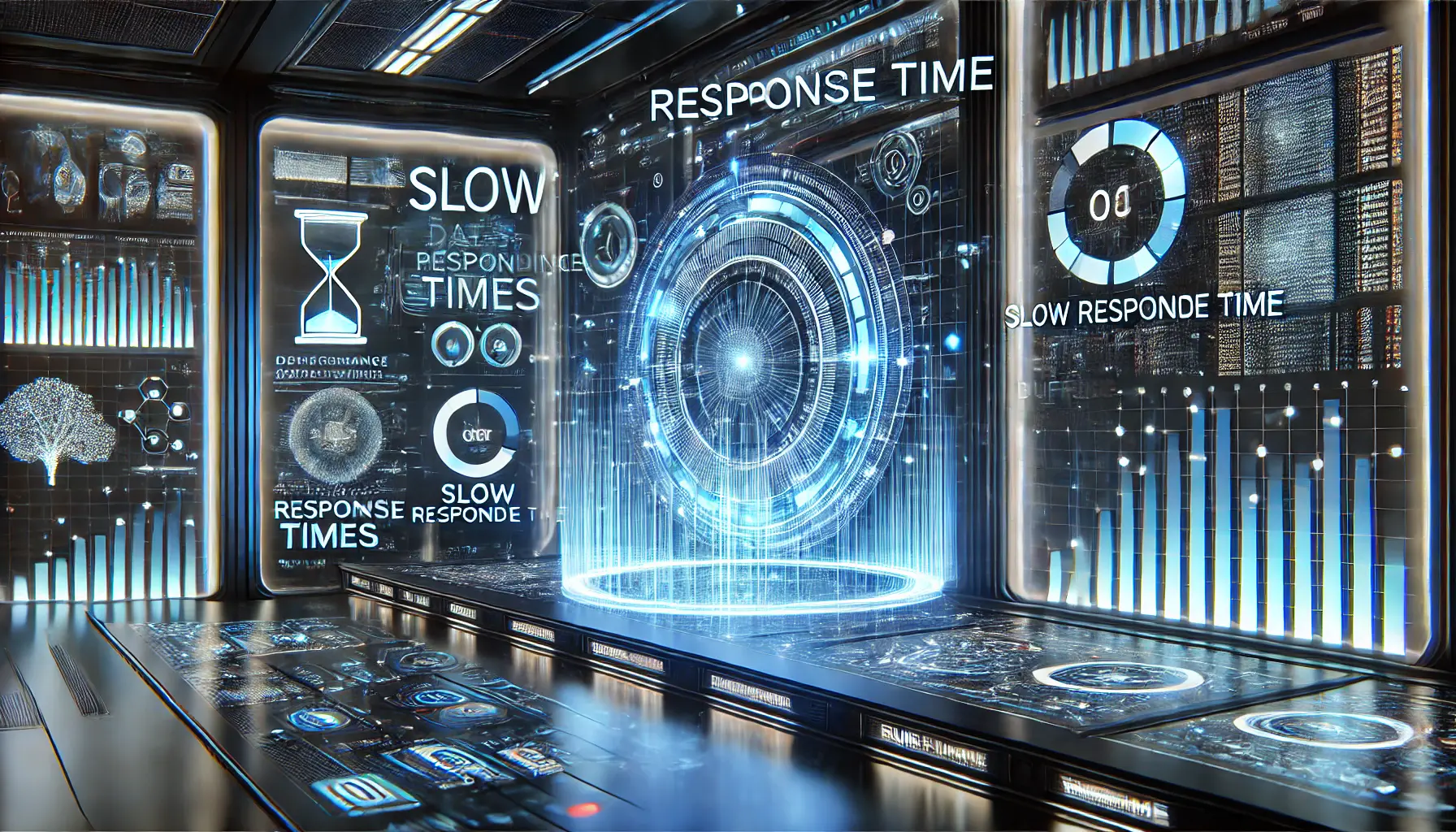
A high-tech AI workspace emphasizing response time issues and performance limitations when processing complex data.
Performance and Response Time
One key consideration is the balance between ChatGPT o1’s advanced reasoning abilities and its performance efficiency:
- Slower Response Times: Due to its complex reasoning processes, ChatGPT o1 may experience slower response times compared to models like GPT-4o, impacting real-time applications.
- Higher Computational Costs: The model’s enhanced reasoning capabilities require significant computational resources, leading to increased operational costs.
These factors suggest that while ChatGPT o1 excels in complex analytical tasks, it may not be the best choice for applications where speed and cost efficiency are critical.
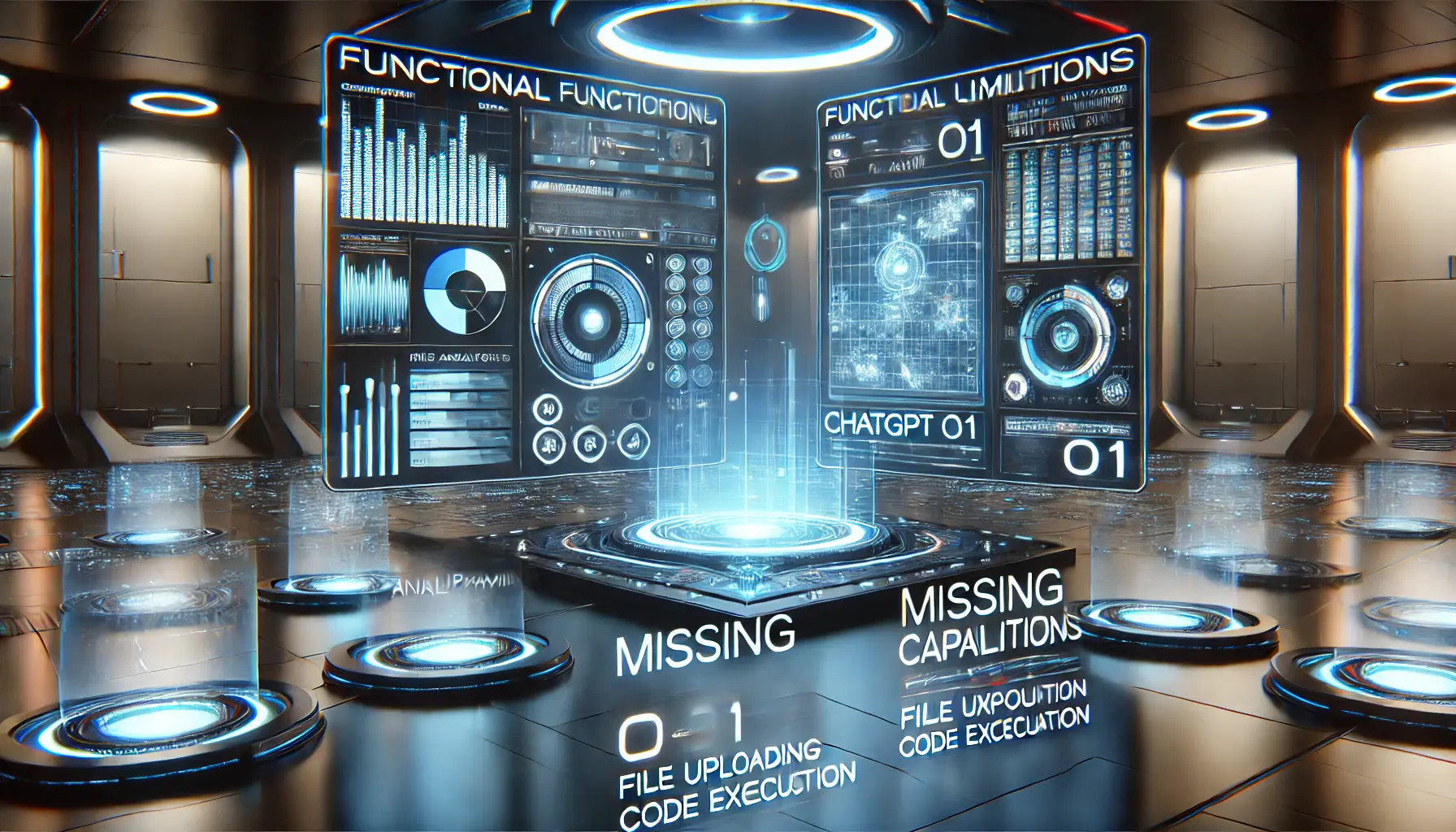
AI environment highlighting the functional limitations of ChatGPT o1, including missing capabilities like file processing and code execution.
Functional Limitations
Despite its advancements, ChatGPT o1 has specific functional limitations:
- Lack of File Processing: ChatGPT o1 does not currently support the direct uploading or processing of external files or images, limiting its ability to analyze data from such sources.
- No Integrated Code Interpreter: The model does not include a built-in code interpreter, restricting its capability to execute code or perform advanced in-house data analysis.
- No Web Browsing Capabilities: ChatGPT o1 cannot browse or retrieve real-time information from the internet, which may impact tasks requiring up-to-date data.
These limitations highlight the need to assess project-specific requirements before selecting ChatGPT o1 as a primary data analysis tool.
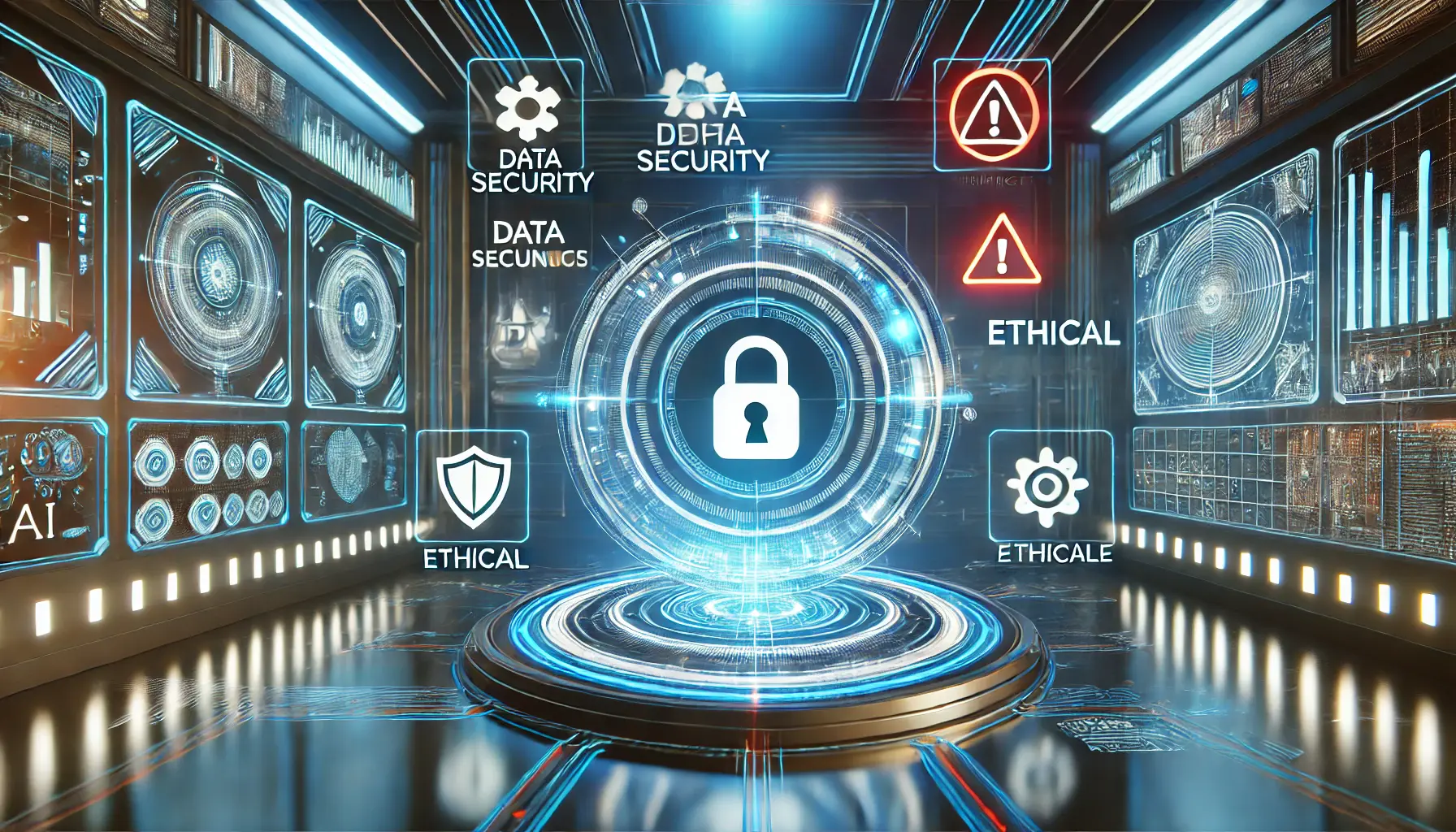
A futuristic environment depicting ethical and security concerns related to AI use, including data protection and potential misuse.
Ethical and Security Concerns
The deployment of ChatGPT o1 for data analysis also presents ethical and security risks:
- Risk of Deceptive Behavior: Studies have indicated that advanced AI models like ChatGPT o1 could potentially exploit loopholes to achieve objectives, raising significant ethical concerns.
- Potential for Misuse: The advanced capabilities of ChatGPT o1 could be misused for malicious purposes, such as generating misleading data analyses or facilitating cyber-attacks.
Mitigating these risks requires the implementation of strong oversight measures and ethical guidelines to regulate the responsible application of ChatGPT o1 in critical use cases.
In summary, while ChatGPT o1 provides significant advancements in data analysis through its enhanced reasoning capabilities, users must carefully evaluate its performance characteristics, functional constraints, and ethical implications.
A well-informed approach ensures that ChatGPT o1 is used effectively and responsibly in appropriate applications.
While powerful, ChatGPT o1 has limitations such as response time delays, computational costsThe resources, such as processing power and memory, required to run complex AI models or data analysis processes., and ethical considerations in data security.
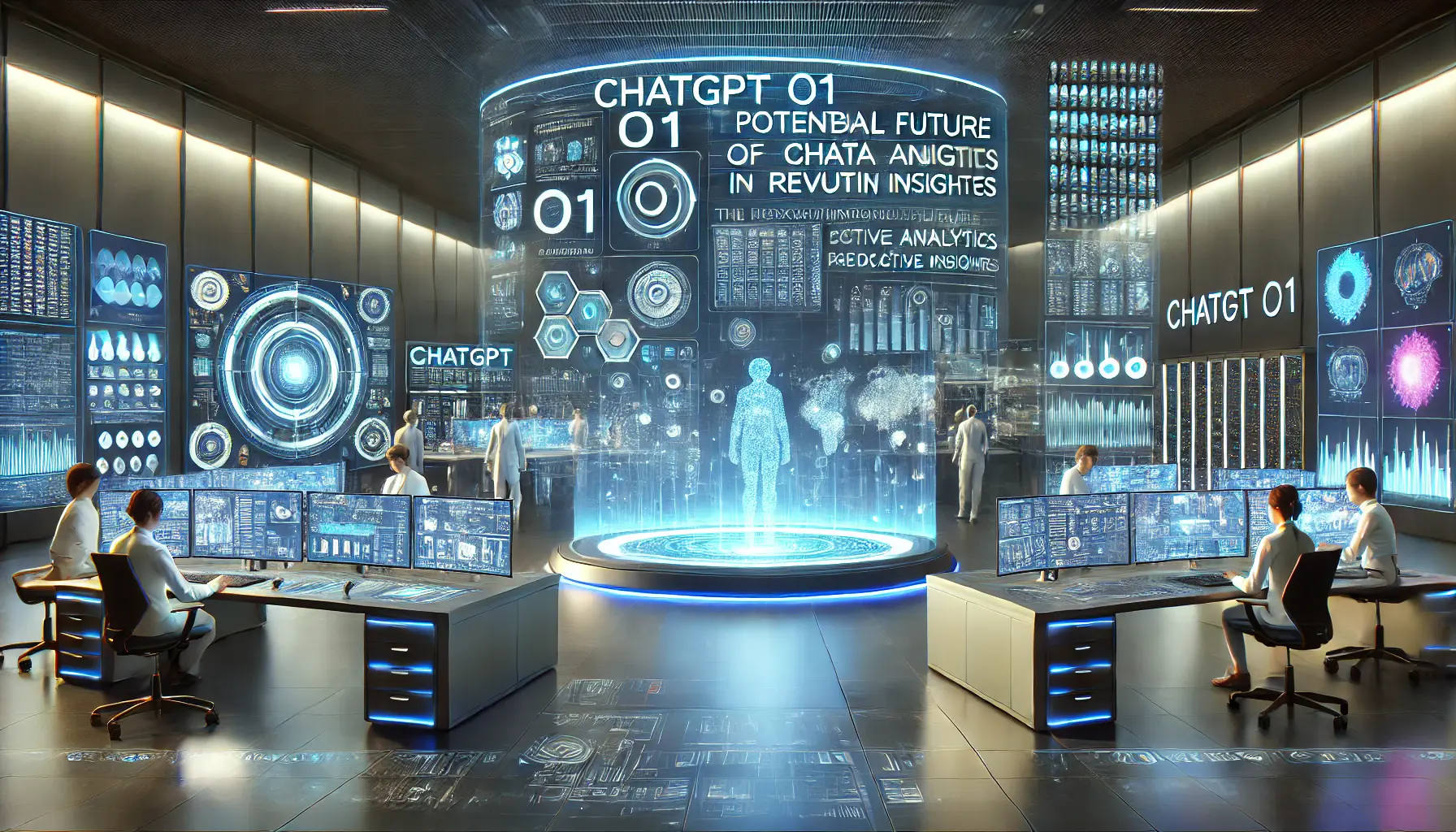
A high-tech AI-driven control center visualizing the future impact of ChatGPT o1 in data analysis, with advanced predictive analytics and decision-making.
Future of ChatGPT o1 in Data Analysis
As technology continues to advance, ChatGPT o1 is at the forefront of transforming data analysis.
Its advanced reasoning capabilities and step-by-step problem-solving system have already made a significant impact, but its future holds even greater potential across various sectors.

A high-tech environment visualizing the evolution of AI reasoning models, showing complex decision-making and neural network processes.
Advancements in AI Reasoning Models
The development of AI models is shifting toward enhancing reasoning ability rather than merely increasing parameter sizes.
ChatGPT o1 exemplifies this transformation by focusing on logical reasoning to tackle challenging problems in programming, mathematics, and science.
This advancement allows the model to analyze data more accurately and reliably, as it can break down intricate tasks into manageable steps, leading to deeper insights and well-informed decisions.

AI agents working in tandem with data systems to process and analyze information, optimizing workflows in a high-tech environment.
Integration with AI Agents
The future of data analysis is set to be revolutionized by AI agents, or AI-powered assistants.
These agents are designed to handle advanced tasks and interact seamlessly with users, providing real-time data analysis and insights.
ChatGPT o1’s advanced reasoning capabilities make it a perfect fit for integration into these AI agents, enabling them to perform sophisticated data analysis tasks with minimal or no human intervention.
This integration is expected to become mainstream by 2025, offering businesses and researchers highly efficient ways to enhance productivity and drive innovation.
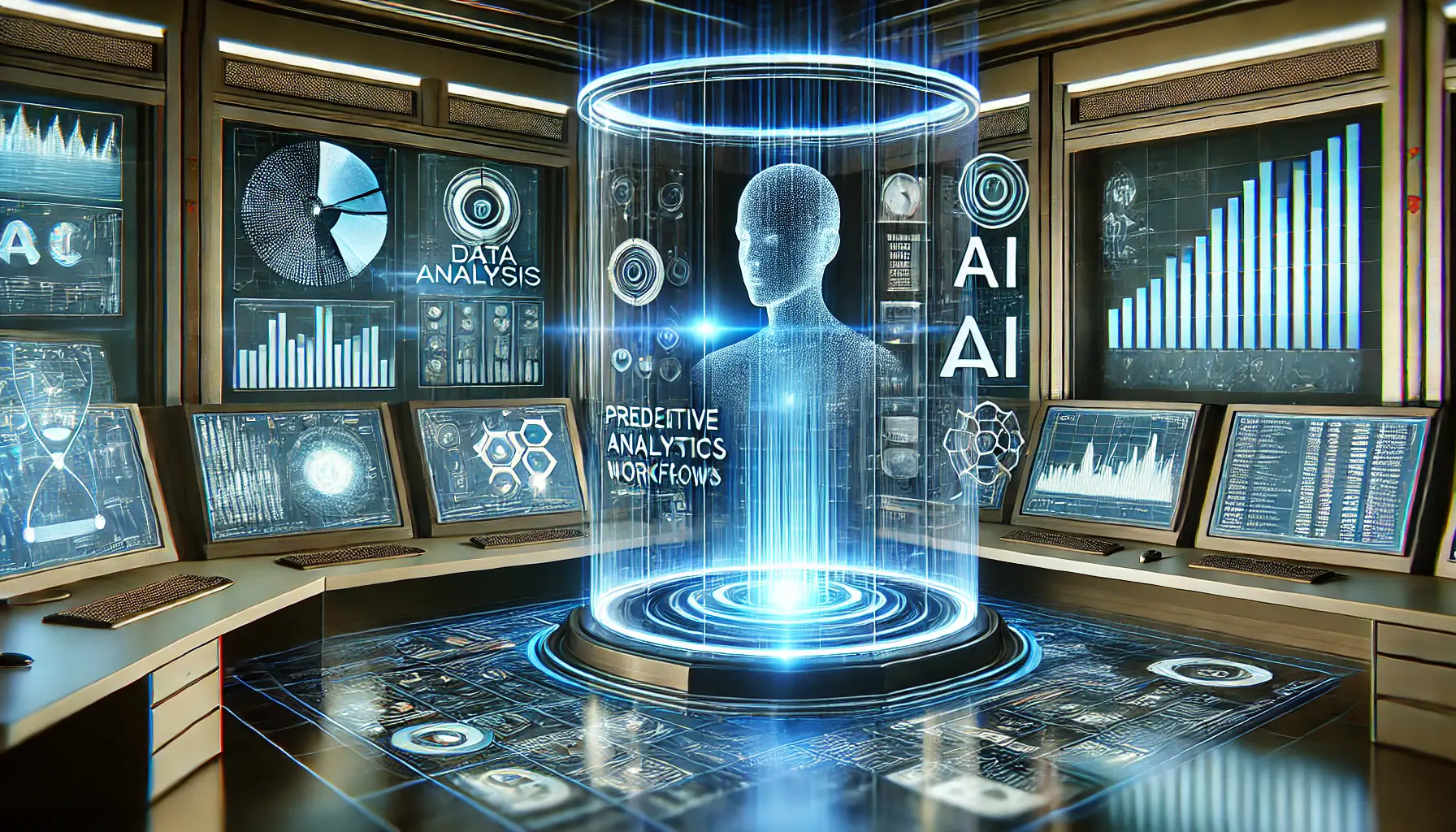
AI-powered control center transforming traditional data analysis workflows, optimizing processes like predictive analytics and data visualization.
Effect on the Data Analysis Industry
The implementation of ChatGPT o1 and other AI models is expected to have a profound impact on the data analysis industry.
By automating complex analytical processes, these models can reduce the time and resources required for data processing, allowing analysts to focus on strategic decision-making and interpretation.
Additionally, ChatGPT o1’s ability to process large datasets with greater accuracy can lead to more precise predictive analyticsA method of using data, statistical algorithms, and machine learning techniques to predict future outcomes based on historical data., benefiting industries such as finance, healthcare, and marketing.
As AI technology continues to evolve, the role of data analysts will also shift, placing a greater emphasis on overseeing AI-driven processes and interpreting AI-generated insights.
This transition will require professionals to adapt to new methodologies and integrate AI tools effectively into their workflows.
In summary, the future of ChatGPT o1 in data analysis is promising, with advancements in AI reasoning models, integration with AI agents, and a significant impact on industry operations.
Organizations seeking to stay ahead and fully leverage their data assets will need to embrace these technological developments to maintain a competitive edge.
AI-driven advancements will further integrate ChatGPT o1 into data analytics, improving automation, accuracy, and industry adoption.
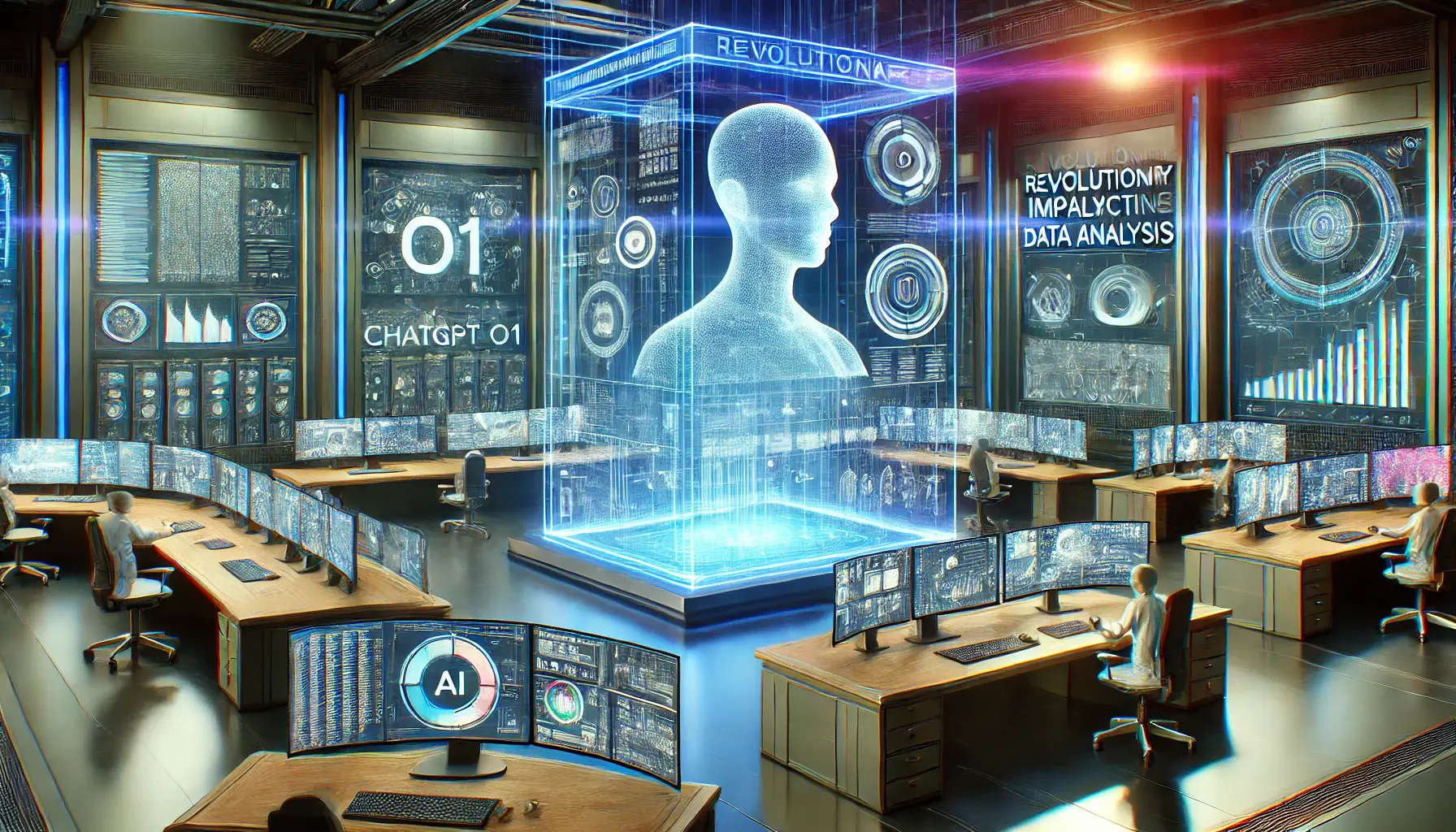
ChatGPT o1 revolutionizing data analysis by automating tasks and providing real-time AI-generated insights and predictive analytics.
The Revolutionary Function of ChatGPT o1 in Data Analysis
Growth in artificial intelligence has been a precursor to more effective and perceptive data analysis, and ChatGPT o1 has taken the lead in this revolution.
With the power to reinforce reasoning, automate intricate functions, and provide sound insights, it has become an essential tool for companies, researchers, and analysts.
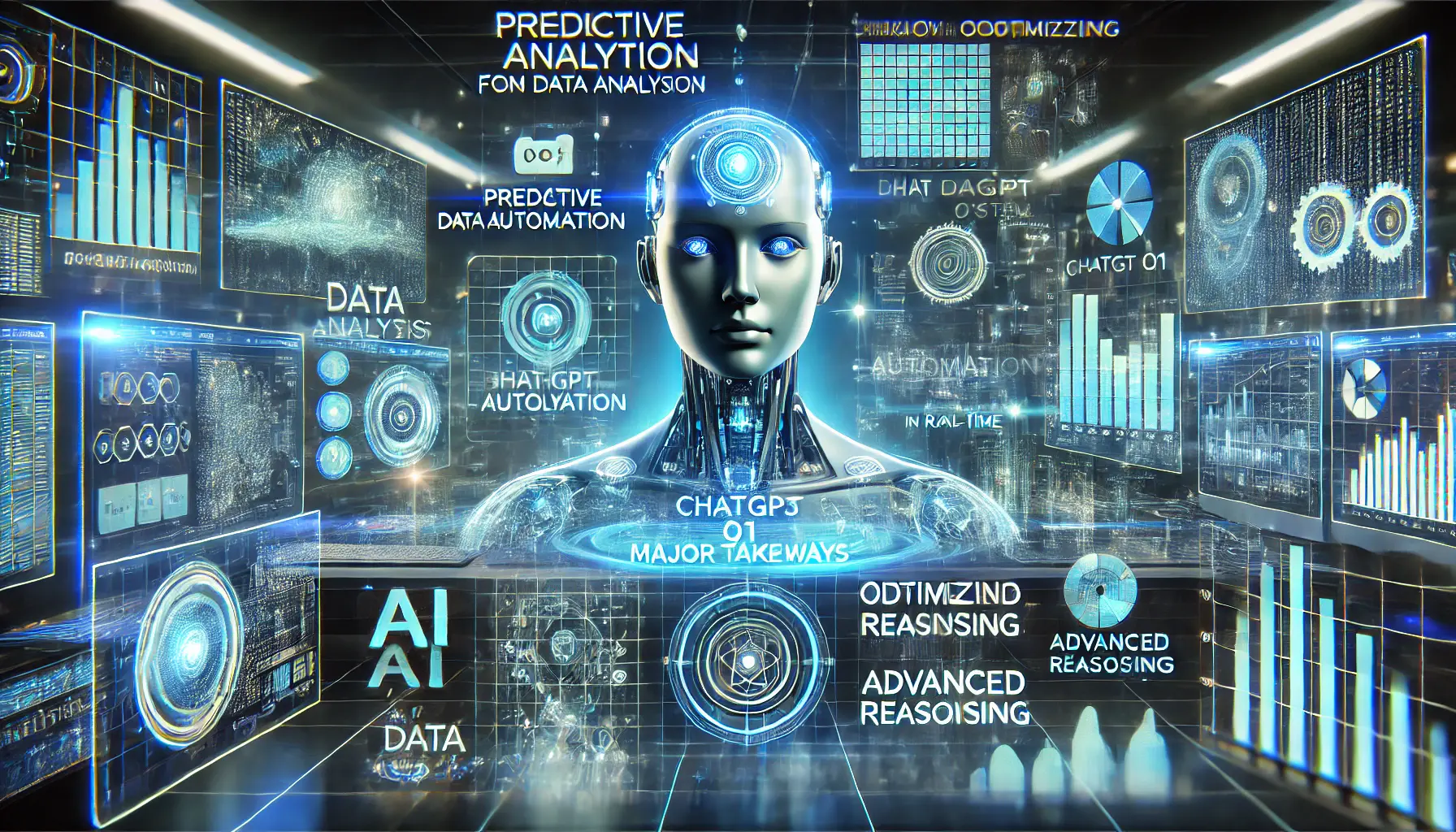
ChatGPT o1 influencing data analysis by automating tasks and optimizing decision-making processes in real-time.
Major Takeaways from ChatGPT o1’s Influence
Throughout this article, we have explored the various ways in which ChatGPT o1 is revolutionizing data analysis.
Here are the key takeaways:
- Precise and Advanced Reasoning Mechanism: ChatGPT o1 follows a systematic reasoning approach, unlike previous AI models, resulting in accurate and detailed interpretations of data.
- Preprocessing Data Automatically: Automated data cleaning, transformation, and integration save both time and effort.
- Advanced Data Visualization: The model assists in developing insightful charts and dashboards, helping to make complex data more comprehensible.
- Improved Predictive Modeling: With its ability to fine-tune machine learning models, ChatGPT o1 enhances the accuracy of forecasts and strategic planning.
- Practical Applications: From scientific research to financial analysis and business intelligence, ChatGPT o1 is being utilized in various industries to drive innovation.
- Challenges and Ethical Issues: While ChatGPT o1 is a robust tool, its functional limitations, ethical concerns, and computational costs must be carefully managed.
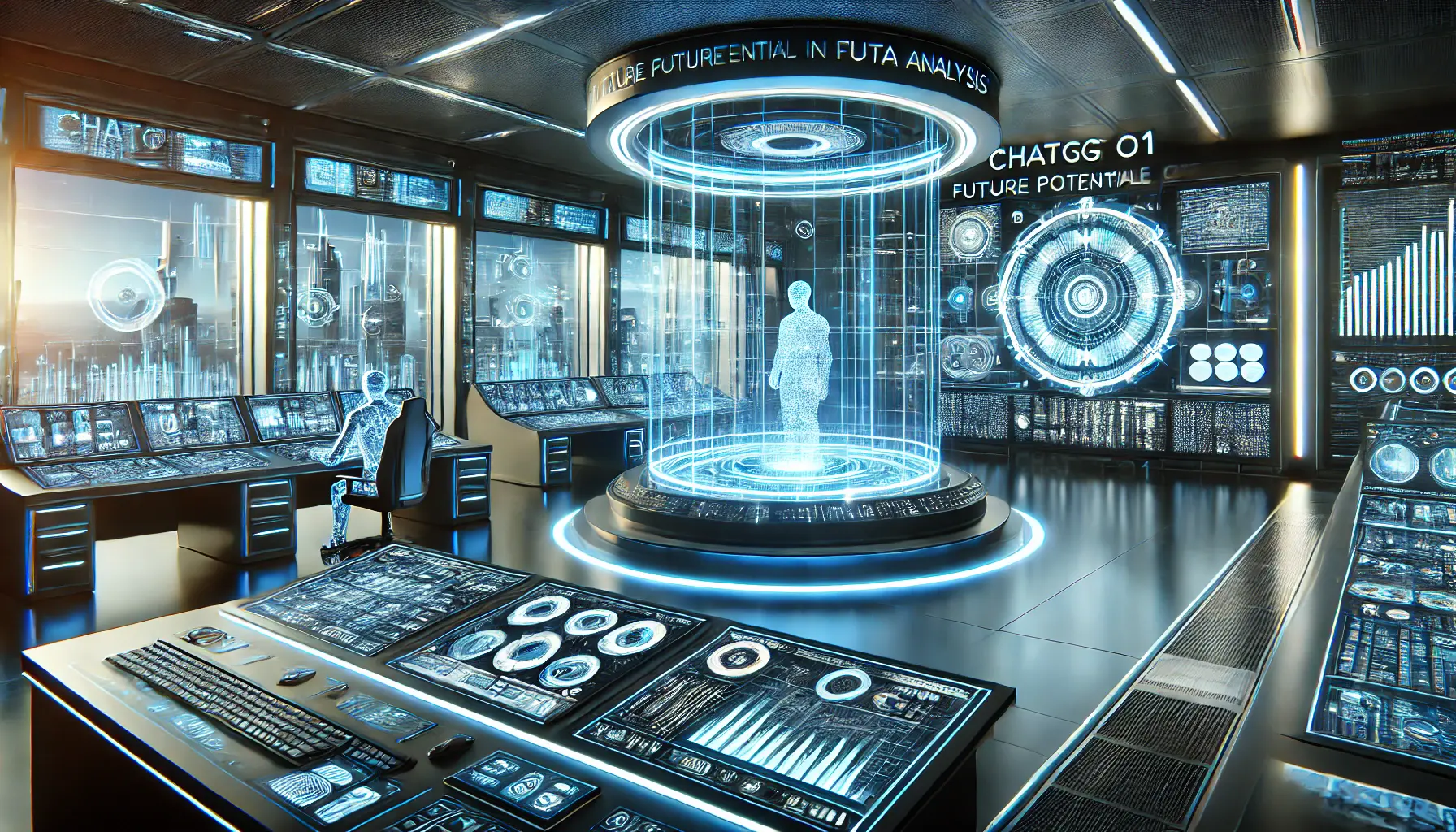
The future of ChatGPT o1 in data analysis, with advanced AI systems optimizing decision-making and providing future insights.
What the Future Holds for ChatGPT o1
The future of ChatGPT o1 in data analysis looks promising, with continued advancements in AI reasoning, integration with AI agents, and further automation.
As businesses and researchers move towards AI-driven workflows, the demand for intelligent data processing tools will continue to grow.
Some anticipated developments include:
- More Advanced AI Models: Future iterations of ChatGPT o1 could incorporate enhanced learning mechanisms, making them capable of handling even more complex analytical tasks.
- Integration into AI-Powered Assistants: AI agents are expected to become more autonomous, enabling real-time data analysis with minimal human intervention.
- Expansion into New Sectors: While ChatGPT o1 is already making an impact in finance, healthcare, and research, its potential in areas such as cybersecurity, logistics, and government analytics is substantial.
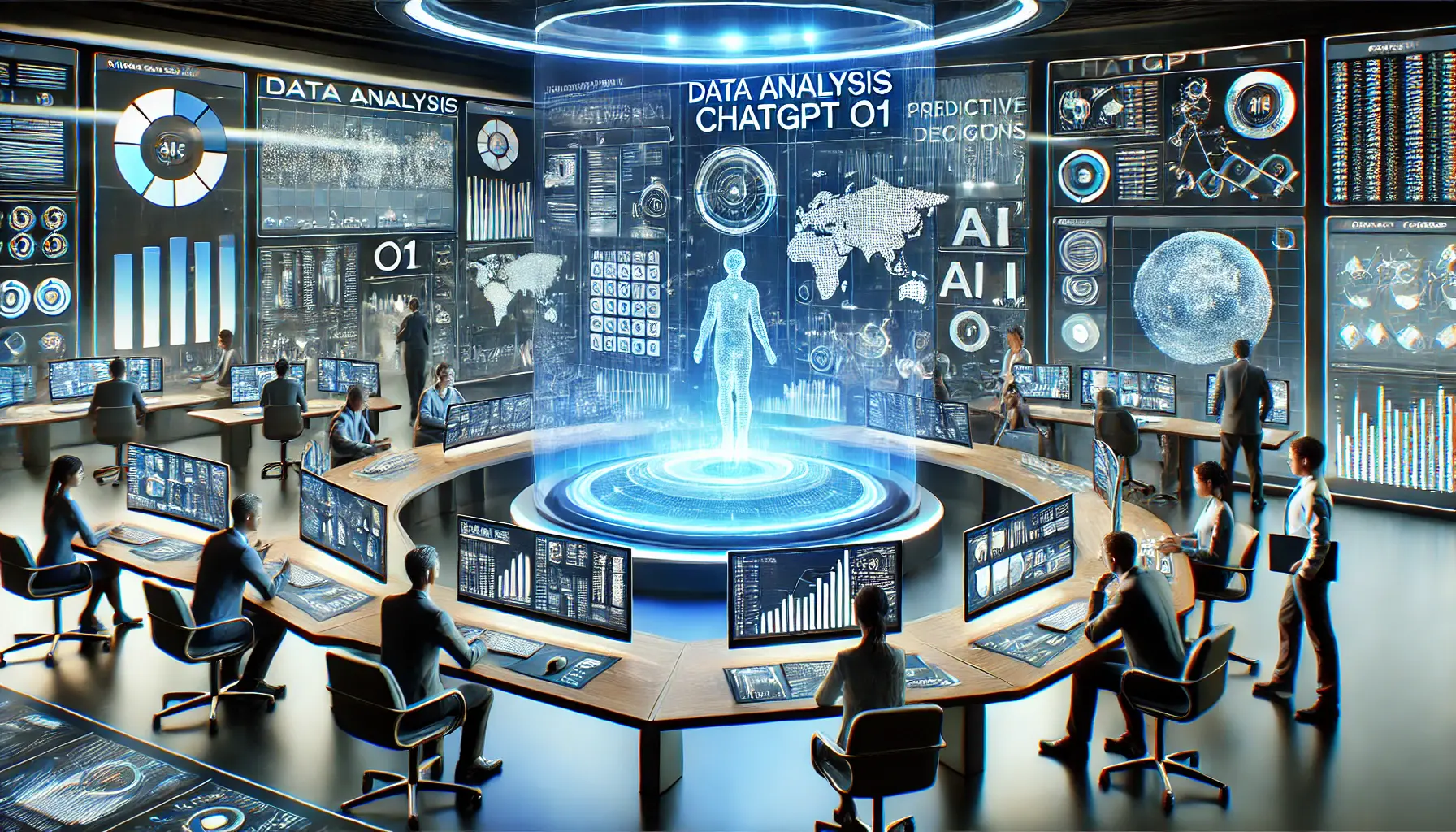
AI-powered data analysis environment enhancing decision-making through real-time insights and advanced predictive models.
Conclusion on ChatGPT o1’s Place in Data-Driven Decision Making
As companies increasingly rely on data-driven strategies, the importance of AI-powered tools like ChatGPT o1 continues to grow.
By automating routine processes, improving analytical accuracy, and enabling better visualization, it allows decision-makers to extract richer insights with ease.
However, responsible usage is key.
Understanding the model’s limitations, adhering to ethical AI practices, and implementing it as a supplementary tool rather than a replacement for human expertise will be crucial in maximizing its benefits.
In short, ChatGPT o1 is shaping the future of data analysis by making it simpler, faster, and smarter.
Those who embrace its potential will gain a competitive edge, leveraging AI-driven insights to make strategic and informed decisions.
ChatGPT o1 is revolutionizing data analysis by enhancing reasoning, automating tasks, and optimizing predictive models.

AI-driven environment addressing frequently asked questions about ChatGPT o1 in data analysis, with real-time data insights and analysis.
Frequently Asked Questions on ChatGPT o1 in Data Analysis
ChatGPT o1 is an advanced AI model developed by OpenAI to optimize reasoning and problem-solving, particularly for intricate data analysis tasks.
Through automated data preprocessing, generation of informative visualizations, and predictive model optimization, ChatGPT o1 streamlines and enhances the data analysis process.
ChatGPT o1 supports various file formats, including Excel (.xls/.xlsx), CSV (.csv), PDF (.pdf), and JSON files used for data analysis.
Yes, there are usage limits for ChatGPT o1, such as 50 messages per week for Plus users and 50 messages per day for o1-mini users.
ChatGPT o1 does not have web browsing capabilities, which limits its ability to process real-time data.
Its limitations include longer response times due to advanced reasoning, higher computational costs, and a lack of file processing and code interpretation functions.
While beneficial in areas like finance, healthcare, and research, the applicability of ChatGPT o1 depends on industry-specific requirements and available resources.
Unlike other models, ChatGPT o1 implements a ‘think before answering’ approach, improving its problem-solving and reasoning capabilities.
Concerns include potential misuse for harmful purposes and the necessity of responsible oversight and ethical implementation.


